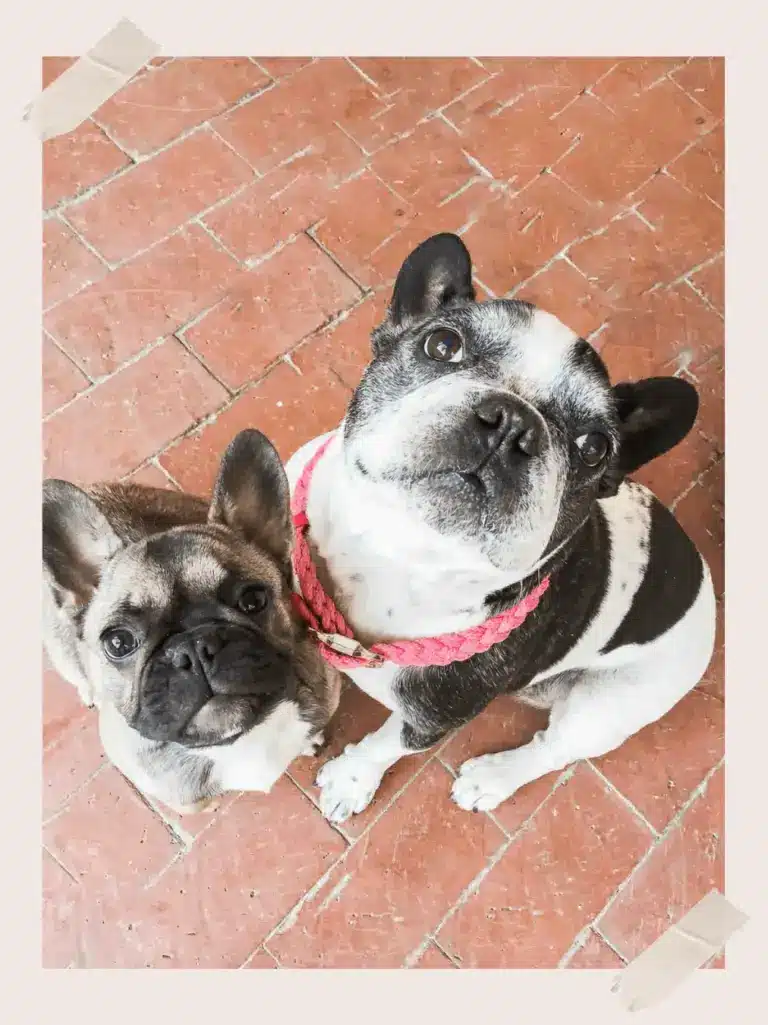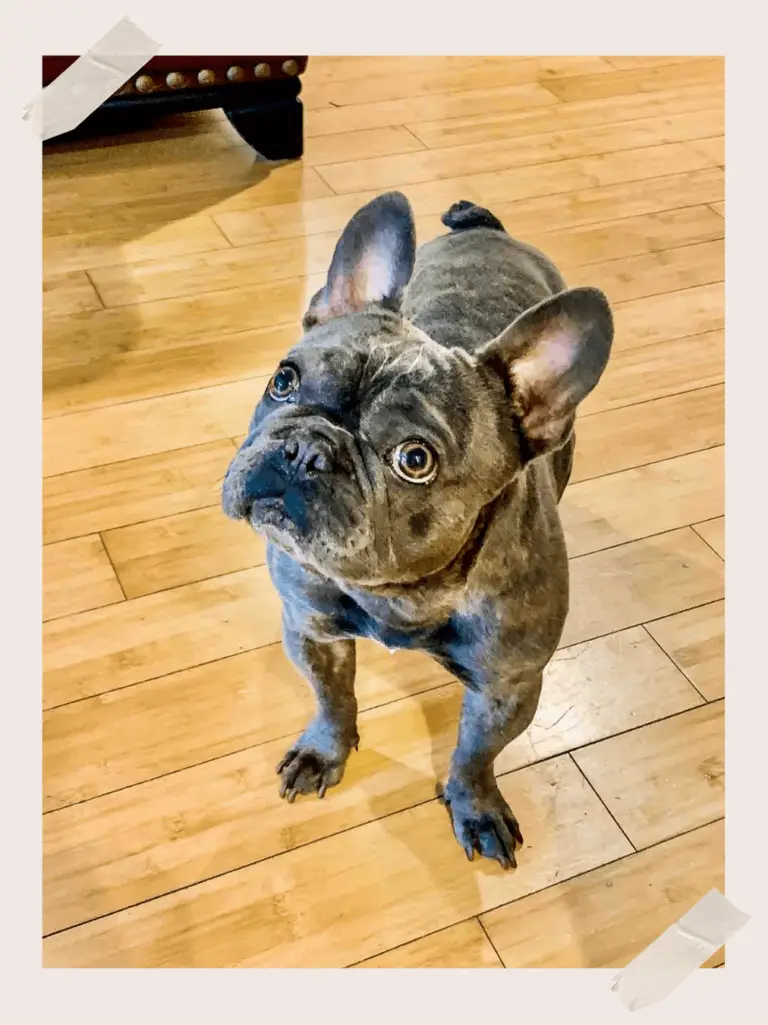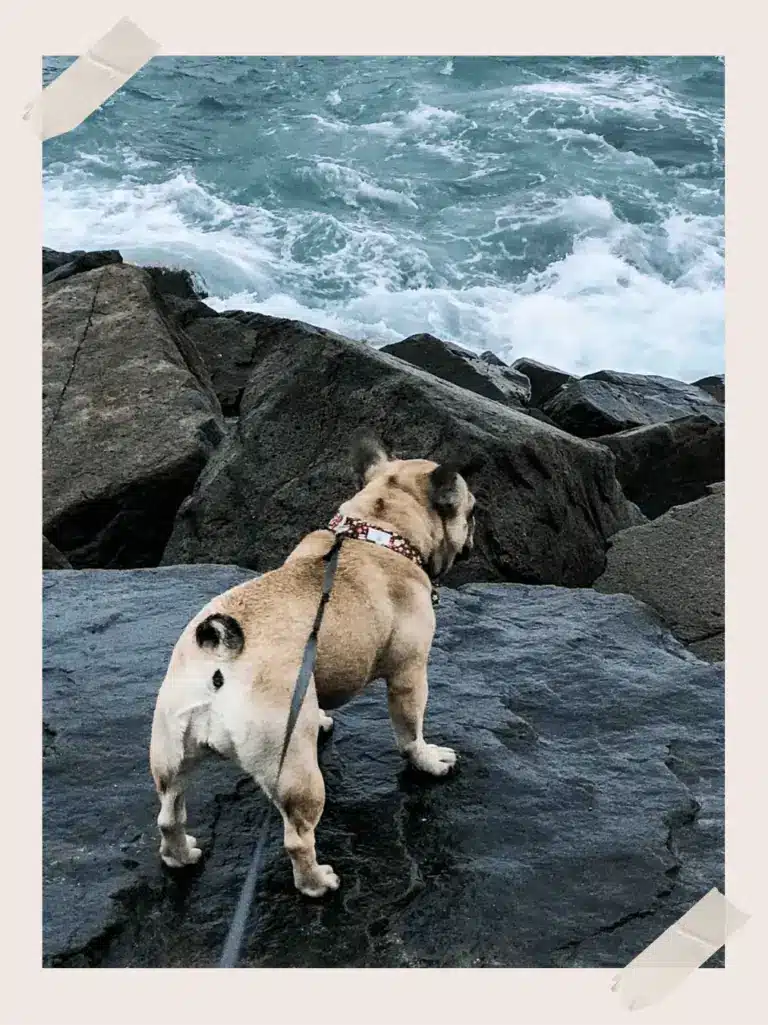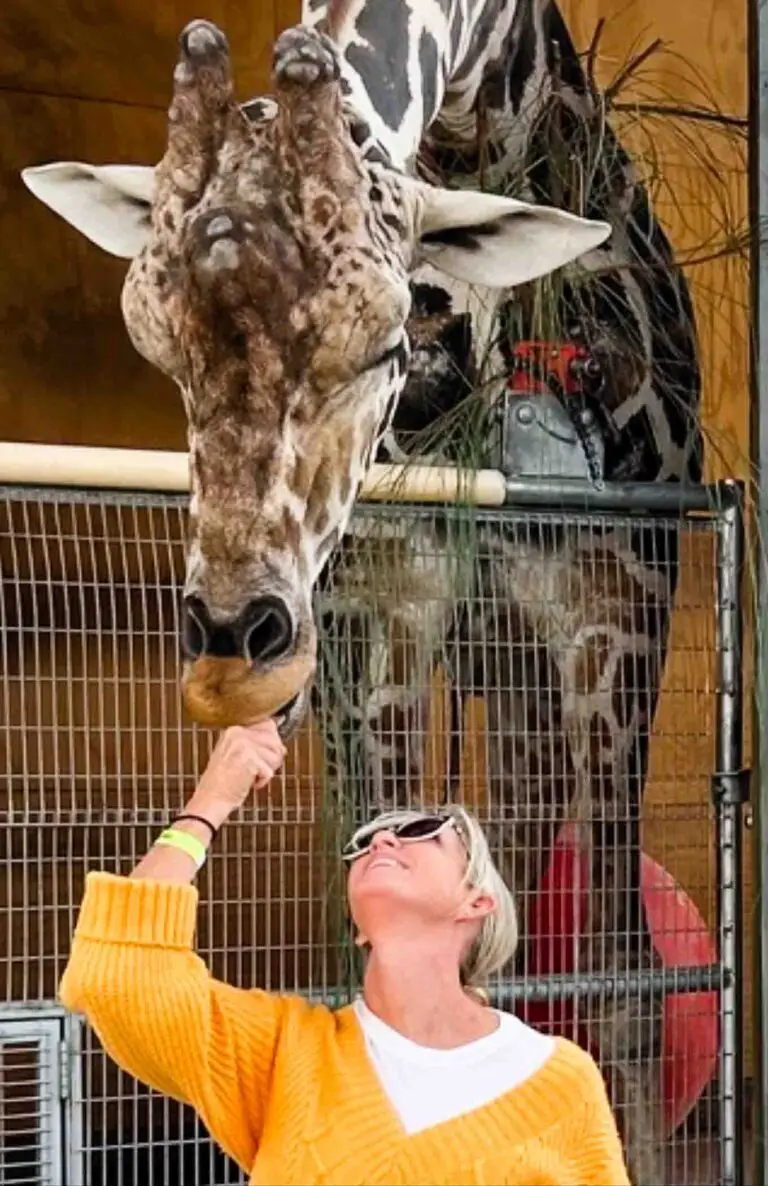
THE HISTORY OF FRENCH BULLDOGS

The history of the French Bulldog is a captivating tale, one that can be told as a Rags to Riches story, or as an iconic American Dream realized. It is a story of evolution, charm, and international influence.
The History of French Bulldogs: English Origins - The Toy Bulldog Emerges
Unsurprisingly, the modern French Bulldog traces its roots back to the ancestral bulldog in England. In the 1800s, English breeders were actively shaping new characteristics for Bulldogs. The original bulldog was Initially bred for bull-baiting. But once that practice was outlawed in 1835, breeders went to work breeding a new bulldog. Multiple breeders went to work engaged in different needs, some hoping to enhance size and strength, others introduced the terrier as a crossbreed and still others hoping for a smaller version. The “Toy Bulldog” emerged during this time as a smaller, lighter bulldog, weighing 12-25 pounds with either upright or rose ears (ears that folded at the tip), round foreheads and short underjaws.

The History of French Bulldogs: From Nottingham, England to Normandy, France
In the mid-19th century, lace workers from Nottingham, England, facing displacement during the Industrial Revolution, took their Toy Bulldogs with them across the English Channel to the Normandy area in northern France. Appeal of these Bulldogs grew in France, leading to a trade in imported small Bulldogs from England. Breeders in England sent over Bulldogs that they considered to be too small, or with faults such as erect ears, which were not valued by Bulldog purest. By 1860, the popularity of Toy Bulldogs had diminished in England, marking the rise of the Bouledogue Francais in France.

The History of French Bulldogs: Frenchies in Montmartre, Paris
Frenchies soon became popular with various levels of society, including the ladies of the evening in Montemarte. The iconic image of French Bulldogs alongside scantily clad mistresses became immortalized in risque postcards of the late 19th and early 20th centuries. In fact, renowned post-Impressionist artist Henri de Toulouse-Lautrec featured French Bulldogs in his paintings, adding to their cultural significance in the bustling Montmartre neighborhood of Paris. The breed’s unique attributes, including compact bodies and distinctive ears, contributed to its charm.

The History of French Bulldogs: French Bulldogs arrive in America
Wealthy Americans traveling in France fell in love with these quirky little dogs and began bringing them back to the States. The Americans preferred the French Bulldogs with erect ears which were still less popular with the English breeders as they preferred the rose eared dogs.
In 1885, the first American-based breeding program was established. The dogs, primarily owned by society ladies, were showcased for the first time at the Westminster Kennel Club Dog Show in 1896.
However, in 1897 the judge at the Westminster Kennel Club Dog Show, only chose winners with “rose ears,” as was the standard for Bulldogs. This judgment catapulted the creation of The French Bulldog Club of America that very same year. The club created a breed standard that dictated the “erect bat ear” type. This standard, emphasizing specific ear characteristics, reflected the preferences of both American and French breeders.
The American Kennel Club quickly and officially recognized the breed in 1898 after the formation of the French Bulldog Club of America
In 1898, controversy arose at the Westminster show when classes for both bat-eared and rose-eared dogs were scheduled despite the new breed standard allowing only the former. The Americans withdrew their dogs, organized their own specialty how, and asserted their preference for bat-eared dogs.
By the early 20th century, French Bulldogs were highly sought after in high society, changing hands for substantial sums and being owned by influential families like the Rockefellers and J.P. Morgans.
By 1906 the French Bulldog was the fifth most popular dog breed in America.

The History of French Bulldogs: Decline of the Breed
Despite their initial popularity, the breed experienced a decline after World War I due to various factors, including the rise in popularity of the Boston Terrier, warm weather in the States and challenges in natural whelping. By 1940, French Bulldogs were considered rare, with only 100 registered with the AKC.
The post-World War II period posed difficulties for breeders, with many dogs facing starvation or euthanasia due to food shortages.

The History of French Bulldogs: The Frenchie Come-back


The 1950s marked a shift in attention, with the introduction of new coat colors. Most Frenchies were brindle with a few black and white dogs. However, creams and fawns were introduced by a Detroit breeder, Amanda West, and she experienced huge success with over 500 group wins, 111 Best in Show awards and 21 consecutive breed wins at Westminster. While the breed had a resurgence in popularity, Frenchie registrations only totaled 106 in 1960.
The 1980s saw a revitalization of the breed, with increased registrations due to the revitalization of the French Bull Dog Club of America and the younger breeders who turned specialty shows into major dog show events and created a new magazine devoted to the breed – The French Bullytin.
Breed registrations on the rise:
1940 – 100 French Bulldog registrations.
1960 – 106 French Bulldog registrations.
1980 – 170 French Bulldog registrations.
1990 – 632 French Bulldog registrations.
2006 – 5,500 French Bulldog registrations.
2023 – 108,000 French Bulldog registrations.
With an estimated 360 dog breeds in existence, in 2023, the French Bulldog is the most popular dog in America surpassing the Labrador retriever.






